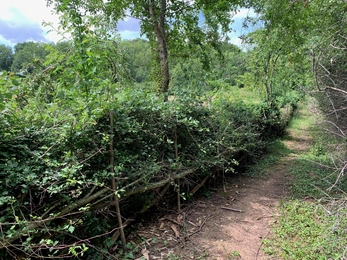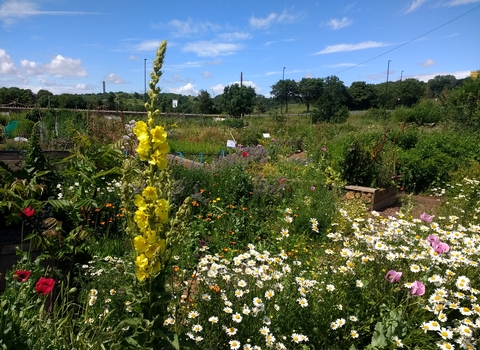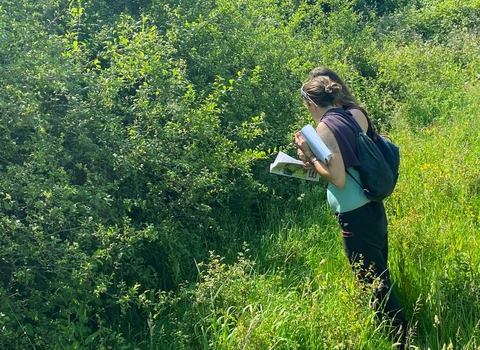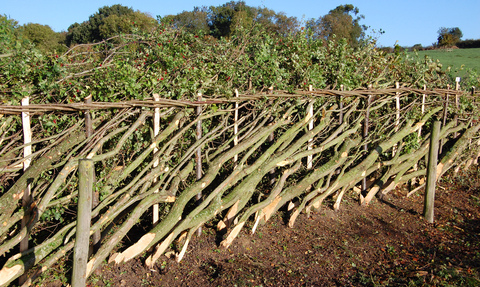
Hedgelaying
Healthy hedgerows
Hedgerows have become a defining feature of our native landscape, so much so that it’s easy to view them as natural features or perhaps not to notice them at all.
In fact, hedgerows offer one of the best – and oldest – examples of people working in harmony with nature.
What is hedgelaying?
The National Hedgelaying Society describes hedgelaying as “a craft that preserves the past and protects the future.”
In practical terms, laying a hedge involves partially severing the stem of the trees in the hedgerow, allowing them to be laid at an angle of around 45 degrees. This fills in gaps which have developed in the hedge, whilst cutting the stems encourages the trees to send up new vertical shoots creating a thick, dense hedge from the ground level up.
The laid hedge is then held in place with a supporting structure of stakes (poles) and binding – the exact method varies according to the regional style used.
Hedgelaying courses
We currently offer two 1-day workshops teaching traditional hedgelaying in the Midland style.
Pete Bevan
Hedgerows for people
Creating a living boundary:
providing shade, shelter and forage for livestock
protecting crops from wind damage and reducing soil erosion
controlling the movement of water, helping mitigate flood risk and slowing the leaching of nutrients into streams and rivers
providing useful wood materials, fruits and nuts
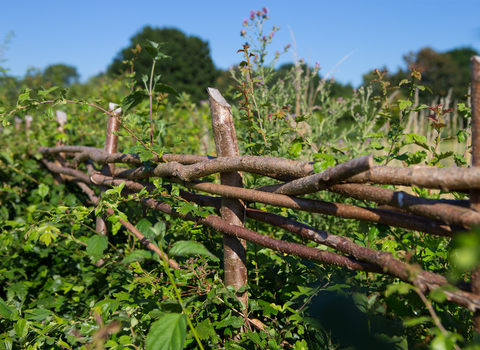
Jon Hawkins
Hedgerows for wildlife
Creating a living ‘super highway’:
forming protected corridors for mammals and invertebrates to travel across the landscape
providing safe nesting sites for many of our native and overwintering birds
fruits and berries are a valuable food source for many animals through winter
shelter for overwintering insects, vital for pollination of food crops
a reliable and abundant food source throughout spring and summer for pollinating insects
Why is hedgelaying good for wildlife?
To ensure that hedgerows can thrive for both people and wildlife, the hedgerow requires managing over time.
Natural succession – the way habitats develop if humans don’t intervene – means that an unmanaged hedge will eventually grow into a row of trees, with the few tallest trees shading out everything below. Plants in the understory die back and gaps develop between trees, no longer providing the valuable wildlife corridors or protection from wind erosion that a thick, dense hedgerow provides.
Laying the hedge as well as subsequent trimming keeps the hedgerow in its most productive and useful state of succession. If well managed, hedgerows can persist for hundreds of years!
Hedgelaying at Grow Wilder
In collaboration with our friends at Sims Hill Shared Harvest we’ve been laying the hedges adjacent to Grow Wilder for the last 4 years.
As one of our favourite winter activities, hedgelaying offers a taste of traditional land management practices, a tangible means of connecting with the land and the reassurance that spring is just around the corner!
We run hedgelaying workshops each winter to enable people from all backgrounds to learn and develop practical conservation skills and to demonstrate the value of traditional rural crafts in a peri-urban setting.

